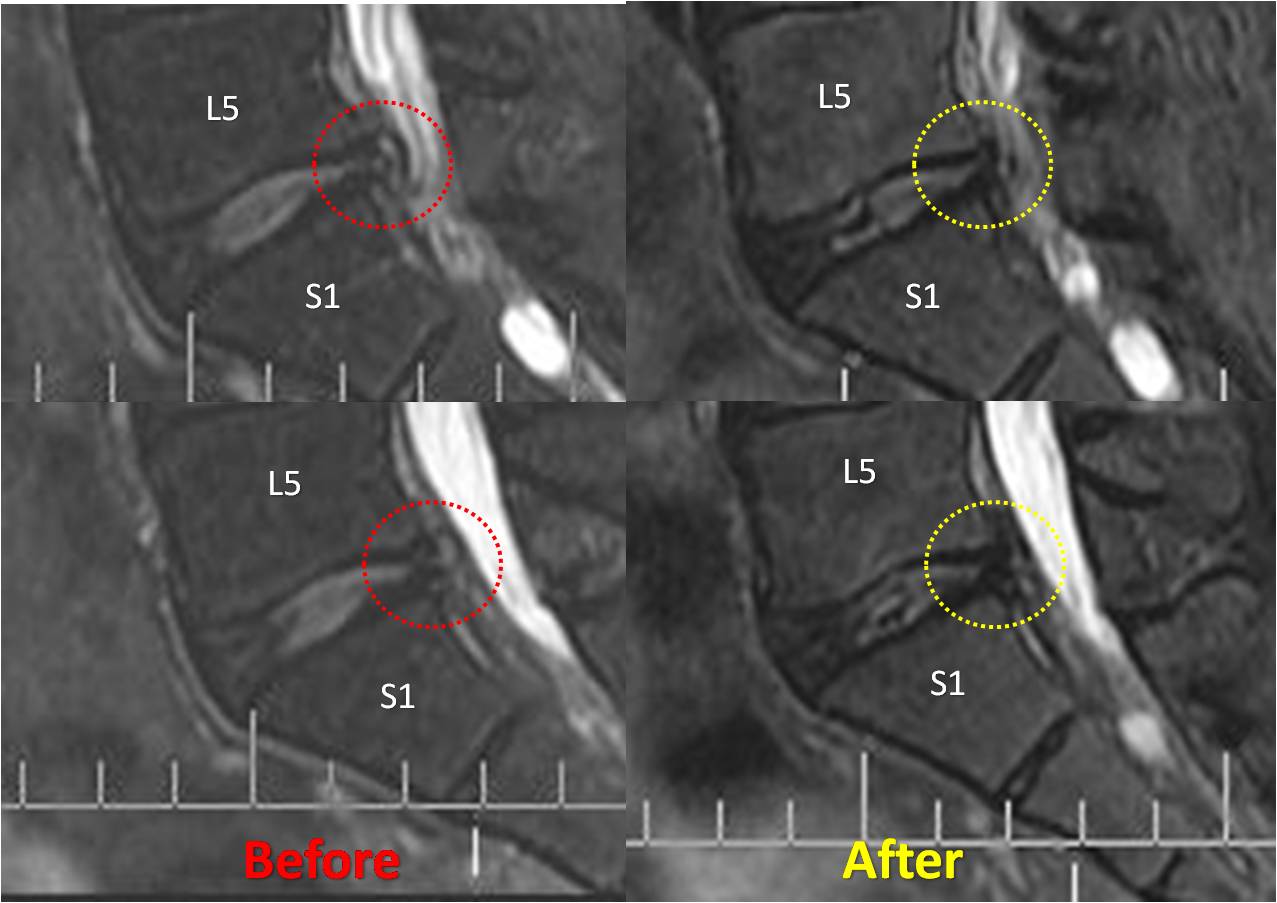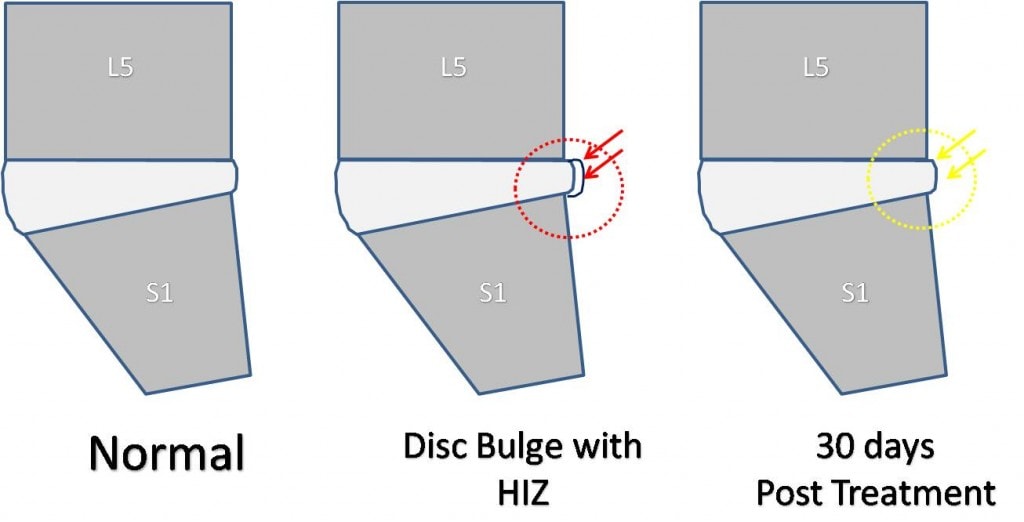Another Stem Cell Disc Success
NQ is a middle aged woman with a multiple year history of low back pain and sciatica (lumbar radiculopathy) who we treated for about a year with intermittant epidurals. She had only transient relief from those injections, at best a few weeks of remission. She failed physical therapy as well as other alternative medicine modalities. The patient was facing a discectomy surgery where the back part of the disc would be removed. It really didn’t matter how that was to be done: through a big surgical approach with instruments, through a laser, through a smaller incision, through a needle-the end result would be the same, the back wall of the disc would be weakened without much ability to heal. Instead of these approaches, she decided to have her own cultured stem cells placed into the disc through and injection. Other than post-op soreness, she wore no brace and had none of the big down-time and recovery that would have been needed if she had traditional low back surgery. She is now about a month post the injection, reporting about 90% improvement in left and right leg pain and numbness and 40% improvement in low back pain. The MRI images above are two matching slices from several months before the procedure (on the left) and two from one month after the procedure (on the right). These are side views of the spine and since MRI’s literally slice across an area, I have included two slices to be as accurate as possible. The images are on an ultra high field magnet (3.0 T) and are also closely matched for imaging parameters (Before=Sag STIR: ET-12, TR-4166.7, TE-37.3; After=ET-12, TR-4166.7, TE-37.3). Note the red arrows in the before images show a large disc bulge that the yellow arrows in the after images show has been reduced. The images below simply the above MRI images, showing that the disc bulge has a “High Intensity Zone” or HIZ. This is an area of bright signal that gives the disc bulge the appearance of a balloon that’s being expanded. This is was bad news for the patient, as this means the back fibers of the disc are literally coming apart and separating. However, by the after image they have mended.
(Please note, this patient was treated with the Regenexx-C cultured stem cell procedure and not Regenexx-SD. While Regenexx-SD does rely on the same stem cell type that was used to treat these patients and other clinics have reported good results using similar procedures that don’t rely on stem cell culturing, Regenexx-SD clinical effectiveness has not yet been established. Finally, not every low back disc patient would be expected to get the same results as NQ. )

If you have questions or comments about this blog post, please email us at [email protected]
NOTE: This blog post provides general information to help the reader better understand regenerative medicine, musculoskeletal health, and related subjects. All content provided in this blog, website, or any linked materials, including text, graphics, images, patient profiles, outcomes, and information, are not intended and should not be considered or used as a substitute for medical advice, diagnosis, or treatment. Please always consult with a professional and certified healthcare provider to discuss if a treatment is right for you.


